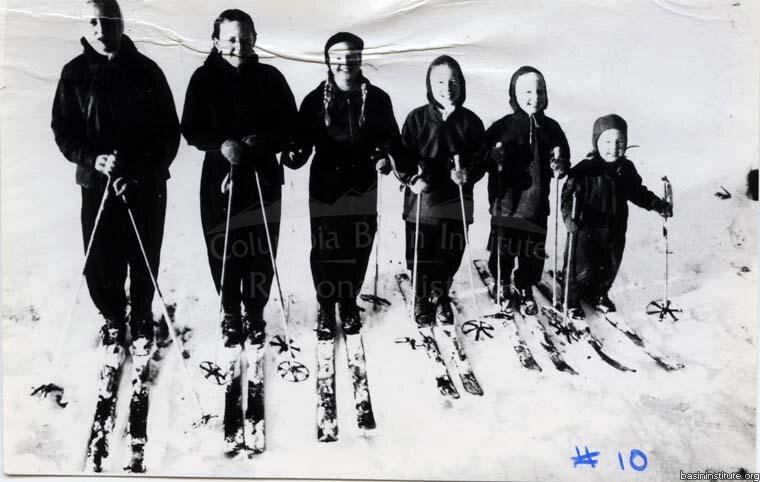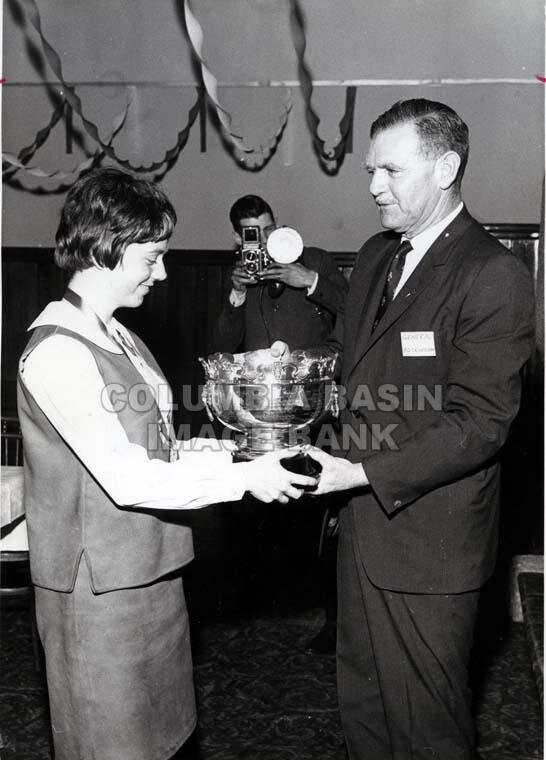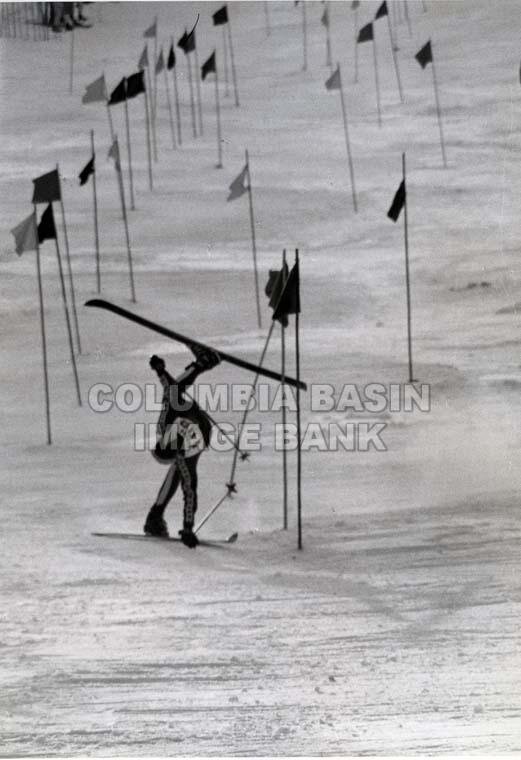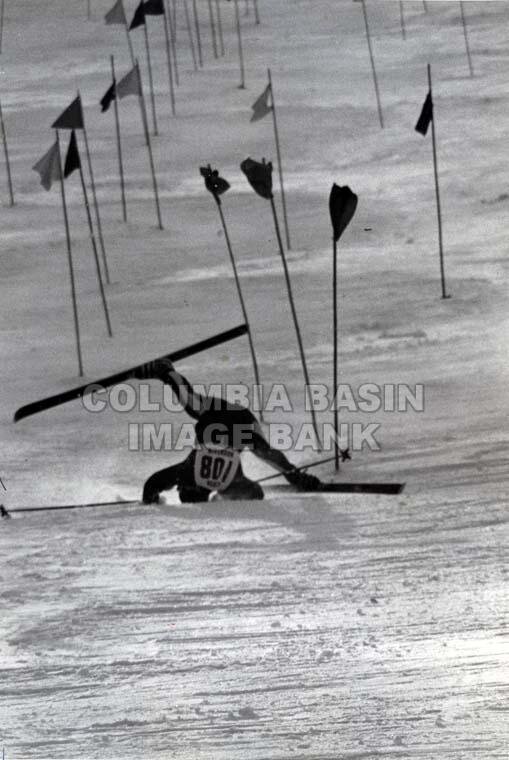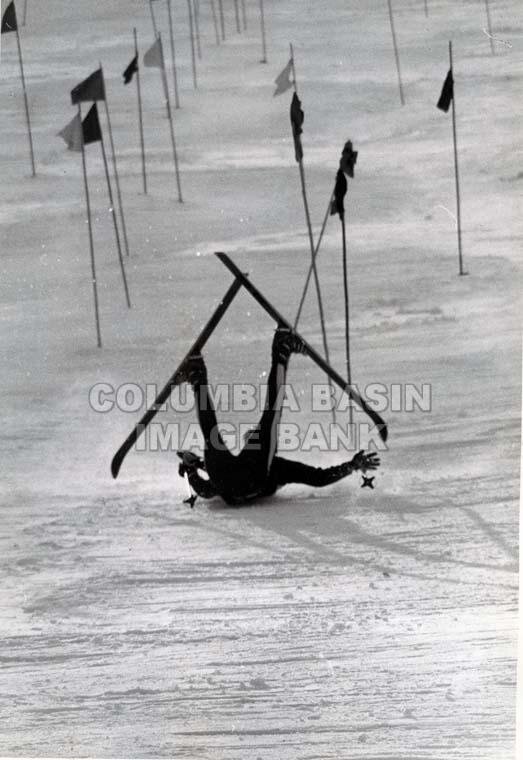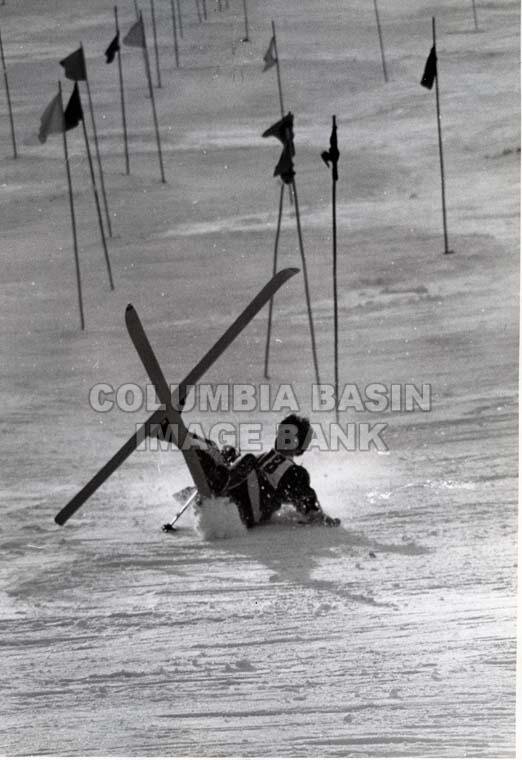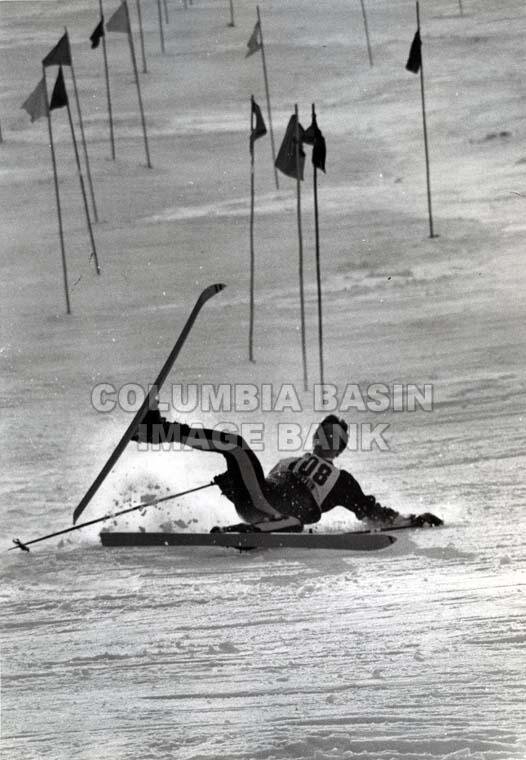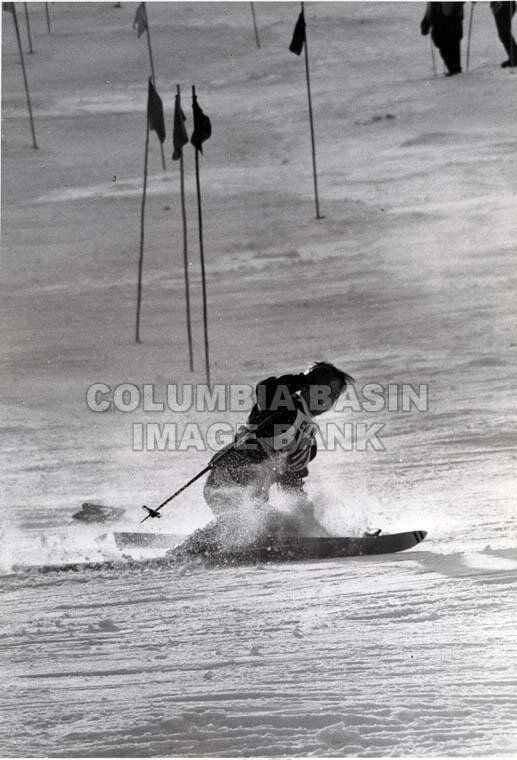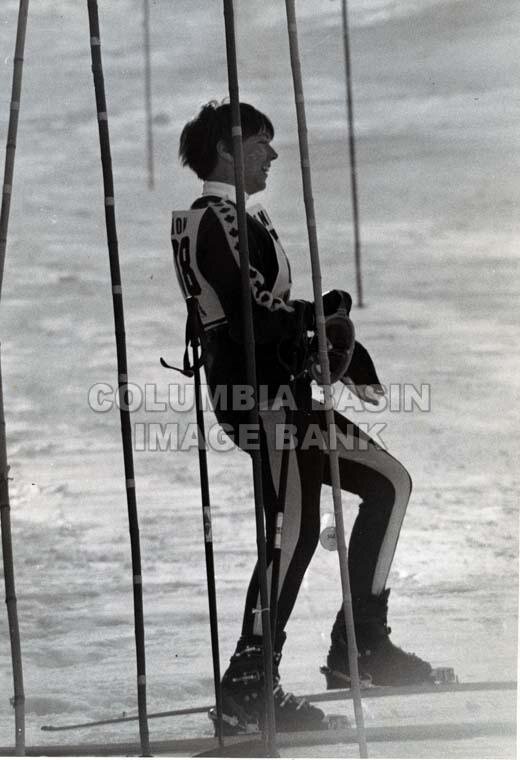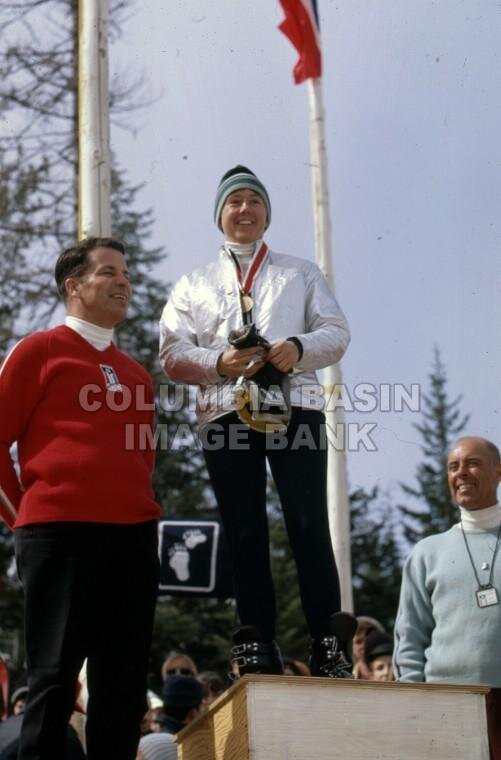Nancy Greene Raine
Name: Nancy Catherine Greene Raine
DOB: May 11, 1943
Birthplace: Ottawa, Ontario
Hometown: Rossland, BC - Moved to Rossland at the age of 2
Family:
Married - Alan E. Raine, 1969
Twin Sons - Charley & Willy, Born 1970
Nancy Greene was born in Ottawa, Ontario, while her father, Bob, was working for the government during World War II. When the war was over, Bob and Helen Greene moved their family back to British Columbia, to Rossland, in the heart of ski country. The Greenes were avid skiers and passed on their passion to their six children who all started skiing as soon as they could walk. They were also founding members of the Red Mountain Ski Club which built a ski lift up Red Mountain in 1947 - one of the first chair lifts in the country.
In her autobiography, Nancy wrote: “I waited a little longer than most kids, certainly longer than my sister, before I went into competitive skiing. I skied for the sheer pleasure of skiing as often as I could. But, apart from carnival day races and local club races, I didn’t find much attraction in competitive racing” (p.38). Nancy goes on to say that her older sister, Elizabeth (“Liz”), was a very talented racer and Nancy didn’t dare challenge her.
But, in 1958, Nancy had a change of heart. That year, the Canadian Junior Championships were held in Rossland and young skiers came from all over Canada to race on Nancy’s home mountain - it was electrifying. Nancy was ranked as a C-class skier and was on the Rossland High School ski team, but that didn’t qualify her to race in the Junior Championship. Instead, she was appointed to the billeting committee to help find places for all the racers to stay while in town. Nancy wrote:
“As more and more skiers flocked into Rossland and as the glamour of the occasion began to overwhelm me, I felt envious of my sister and the other girls. They were going to race, to be a part of this great event, and I wasn’t. Racing suddenly seemed very appealing to me. And there was something more - for some reason, perhaps simply my own ego, I felt I could beat most of those girls, even if I hadn’t been much of a racer up till then” (p.39).
Everything changed with a phone call the night before the opening of the races. It was the B.C. junior team coach - the icy conditions were wreaking havoc and two of his racers had been injured in falls - he needed some substitutes, would Nancy help him out? And so Nancy became a ski racer!
Reflecting on those early races, Nancy wrote: “I realize I was operating with several advantages in my favour. For one thing, injuries had eliminated most of the good B.C. girls. Then, I naturally knew the hill, my own Red Mountain, better than anyone except Liz. And, maybe most of all, the eastern girls couldn’t adjust to Red Mountain’s steepness. Some of them turned white when they stood at the top of the run. They were petrified. Dad was right - eastern slopes are tame compared to western hills” (p.40).
Nancy’s performance in the Junior’s brought her and Liz to the junior championships in Collingwood, ON in 1959. Liz finished at the top, but a fall and injury saw Nancy finish in 7th place. But, Pepi Salvenmoser, the Austrian coach of the 1960 Canadian Olympic ski team, invited both Nancy and Liz to Olympic training camp. Liz and Pat Nora, also of Rossland (daughter of legendary Rossland skier Trygve Nora), were named to the team, and Nancy was selected as an alternate. Nancy performed strongly in the pre-Olympic races in the U.S.A. and at the last moment, right before the team left for the Olympics, Nancy was given Pat Nora’s spot on the team and was on her way to the 1960 Games.
The 1960 Olympic Games - Olympic Valley, California
Nancy’s first Olympic experience was significant. While her own performance was mediocre (see Table 1 below for statistics), Canada’s Anne Heggtveit took gold in the slalom. Watching Anne Heggtveit receive her gold medal on the podium while the Canadian national anthem played and the Canadian flag waved, 16-year-old Nancy resolved to one day win a gold medal for herself, and for Canada.
In between the 1960 and 1964 Olympic Games, Nancy and the Canadian National Team were hard at work training and studying (education was supported as an integral part of a skier’s development, and a flexible program was worked out with Notre Dame University in Nelson, BC). Nancy credits coaches Verne Anderson, Dave Jacobs, and John Platt with the Team’s successes and esprit de corps. About Anderson, Nancy wrote:
“...Verne was the coach who offered me the most. He was a remarkable man, very tough-minded, very determined, a man with no sympathy for racers who dogged it...He infused all of the girls on the Team with his own tremendous will to succeed, and together with his all-round knowledge of racing techniques and his natural coaching ability, he made one terrific coach” (p.64).
After a strong 1963 season, Nancy was feeling confident about the 1964 Olympic Games in Innsbruck, Austria. Unfortunately, the Austrian games were plagued by a poor snow season and Nancy was plagued by an ankle sprain and ski wax catastrophes. The overall Canadian Olympic Team had a challenging games and was disappointed with the outcome. Many ski racers retired after the ‘64 Games, but not Nancy - she was already looking ahead to 1968.
Nancy calls the 1965 season her breakthrough year. She won championships and races all over Canada and the U.S.A., including the American Nationals at a brand new ski area - Crystal Mountain, Washington. The 1966 World Championships in Portillo, Chile were a disappointment for Nancy - an epic fall resulted in an elbow injury that affected her skiing. But she emerged more determined than ever to do better.
During Nancy's nine year racing career, she won three U.S. Championship titles and nine Canadian titles. The introduction of the World Cup in 1967 coincided with Nancy's arrival as one of the top ranked skiers in the world. She narrowly won the 1967 overall title with a victory by 7/100th of a second in the last race of the year, defeating a strong French ski team that had dominated the World Championships the previous summer.
2292.0086: Trophy Presentation by General Rockingham to Nancy Greene, First Ladies Combined Rossland March 1966.
How to Fall with a Smile
“Nancy Greene of Canada not only skis like an Olympic gold medalist, she falls like one too. The pretty 25-year-old winner of the 1967 World Cup has hit the deck in windmill falls that would hospitalize ordinary mortals and, more often than not, come up smiling. This photo sequence of a slalom wipeout finds Nancy moments after she’s hooked a ski on a gate and pitched forward, right ski elevated. Tucking in her head down she spreads her arms to cushion the shock and protect her neck. Flipping forward she gets her skis airborne to reduce the likelihood of breaking a leg and prepares to ride it out. Her rolling momentum is too much, however, and she goes forward planting the tail of her left ski until the binding releases. She gets her skis pointing in the same direction using her arm to slow her sliding. With her weight on her right ski she successfully battles her way to her feet. In the final photo she’s picked the snow out of her ears, re-attached her skis and, smiling, is ready for her next run.”
Table 1. Nancy Greene’s Olympic rankings.
The 1968 Olympic Games - Grenoble, France
The 1968 Olympic Games were in Grenoble, France; Nancy carried the Canadian flag during the opening ceremonies. Her downhill race was hampered by ski wax problems and she finished a disappointing 10th. In the slalom a few days later, things turned around for Nancy and she won a silver medal! Next up was the giant slalom. Nancy memorized the course and prepared her skis; she was determined to win. While waiting for her turn, Nancy and her coaches Verne Anderson and John Platt (both Rosslanders) got to talking about all kinds of things and Nancy nearly missed her turn (this was Anderson and Platt’s ploy to distract her from thinking too much about her race) - she had to get going right away. Nancy remembers the race this way:
“I came out of the starting gate very quickly and took off from there. I’d really have to say with unblushing immodesty, that I skied just about a perfect run. A couple of months later, I saw films of that race on television and, watching my run, I realized that there wasn’t a move I made that I would change if I had to ski the giant slalom again. I skated furiously on the flat part of the course where I had to work to gain acceleration, and I shot down the bottom part of the course, which was steep and icy, with absolute freedom. I let my skis run for me, the way a racer does when he’s travelling with all the stops out, and when I whipped across the finish line, I knew I had what I wanted” (p.163).
She finished nearly 3 seconds ahead of the second place finisher, Annie Famose, and this is still considered one of the most decisive wins in Olympic history. Nancy had won her gold medal!
The RMDC acknowledges that the name of the “Squaw Valley,” an area in California, is derogatory and that the term “Squaw” has historically been used as a slur against Indigenous people. The RMDC does not intend to cause offence by using this terminology within its historical context.
“GRENOBLE, France (CP) - Nancy Greene of Rossland, B.C., zigzagged down the Chamrousse slopes at breakneck speed this morning, won the Olympic gold medal for Canada in the women’s giant slalom and clinched the world combined championship. The powerful little Canadian turned in a fantastic run of one minute, 51.97 seconds to win the gold by a margin of 2.64 seconds, one of the widest in the history of a major skiing event. Greene, who lifts weights nearly twice her 124 pounds as part of a Spartan training regimen, won the combined title by placing second in the slalom and 10th in the downhill.
”I think perhaps it was my greatest race ever,” said Greene, the world’s best woman skier in 1967 when she won the World Cup, barely ahead of Goitschel. The 24-year-old Canadian is the first athlete from her country to win two medals in Olympic skiing, and only the second Canadian skier ever to win a gold. Anne Heggveit of Ottawa won Canada’s first gold ever in the slalom eight years ago at Squaw Valley, Calif. Canada’s only other ski medallist was Lucile Wheeler of St-Jovite, Que., the bronze winner in 1956 when she placed third in the downhill.
Goitschel, disappointed by her own seventh-placing, said: “Nancy was much too good for me today. I congratulate her on her great victory. It was not a matter of luck - I don’t think there is luck in racing” she said.”
The
du Maurier International (1968)
Red Mountain, Rossland B.C.
The 1968 du Maurier International was held on Nancy’s home hill, Red Mountain. Nancy called it “...the greatest, most complete, most star-studded, best-attended racing meet ever held in the whole of Canada - and, maybe if I wanted to go out on a limb, in all of North America” (p.173). It was an official World Cup competition, a first for Canada! Rosslanders put on an exceptional event and involved nearly the whole community in making it an incredible success. Six or seven thousand spectators turned out to watch their own Nancy Greene race down Red Mountain. She had a rough start, injuring herself in a fall during the slalom and ultimately being disqualified for missing a gate. But, she won the giant slalom in front of her hometown crowd, showing her friends and family that she was the best! A delightful banquet in the Cominco gymnasium in Trail finished off the spectacular week of racing.
On a very high note, Nancy Greene retired from amateur ski racing at the end of the 1968 season. In two years of World Cup racing, she had a total of 13 victories, the most by any Canadian and still one of the top overall averages today. She had raced all over North America, Europe and in South America and competed for Canada in the World Championships in Chamonix, France and Portillo, Chile as well as three Olympic Games: Olympic Valley, Innsbruck, and Grenoble. Having reached her goals, Nancy retired from amateur racing at the age of 24 and embarked on a successful promotional career.
Ski Career
Canadian National Ski Team - 1959 to 1968
World Championship Teams - 1962 & 1966
Canadian Olympic Teams - 1960, 1964, 1968
17 Canadian Ski Championship titles
3 U.S. Ski Championship titles
13 World Cup victories in1967 & 1968, the most by a Canadian
1967 - Overall World Cup Champion
1968 - Overall World Cup Champion
Including World Cup in Rossland in March 1968
Olympic Champion - Giant Slalom
Olympic Silver Medallist - Slalom
F.I.S. Alpine Combined Champion
Member
National Sports Hall of Fame
B.C. Sports Hall of Fame
Canadian Honour Roll of Skiing
U.S. Ski Hall of Fame
1968 Federal Task Force on Sport
Honourary Chairman, Nancy Greene Ski League
Honours & Awards
1968 - Officer of the Order of Canada
1968 - Order of the Dogwood, (BC's highest award)
1967 & 1968 - Canadian 'Athlete of the Year'
1967 - Amateur Athletic Union 'Female Athlete of the Year'
1968 - B'nai B'rith 'Woman of the Year'
1988 - B.C. 'Ambassador of Tourism'
1991 - Whistler's 'Citizen of the Year' (with husband Al)
1999 - Hon. Doctorate of Laws, University College of the Cariboo
1999 - Canadian Female Athlete of the Century
1999 - HALVA International Skiing Award
2002 - Hon. Doctorate of Laws, Royal Roads University
2004 - Hon. Doctorate of Laws, Simon Fraser University
2004: Order of British Columbia
2010: Olympic Ambassador for Vancouver Olympics
For more information:
Team Canada Website - Nancy Greene
Olympics Website - Nancy Greene
Greene, Nancy & Jack Batten. Nancy Greene: An Autobiography. Don Mills, ON: General Publishing Co, 1968.
BC Sports Hall of Fame - Nancy Greene
Canadian Ski Hall of Fame & Museum - Nancy Greene Raine
Nancy Greene Raine, BC Sports Hall of Fame
Contribute your own memories and experiences with Nancy Greene Raine:
The form below will email us your message. If you prefer to speak to us directly or have other questions or comments about this page, please call (250) 362-7722 or email the archives directly at archives@rosslandmuseum.ca

